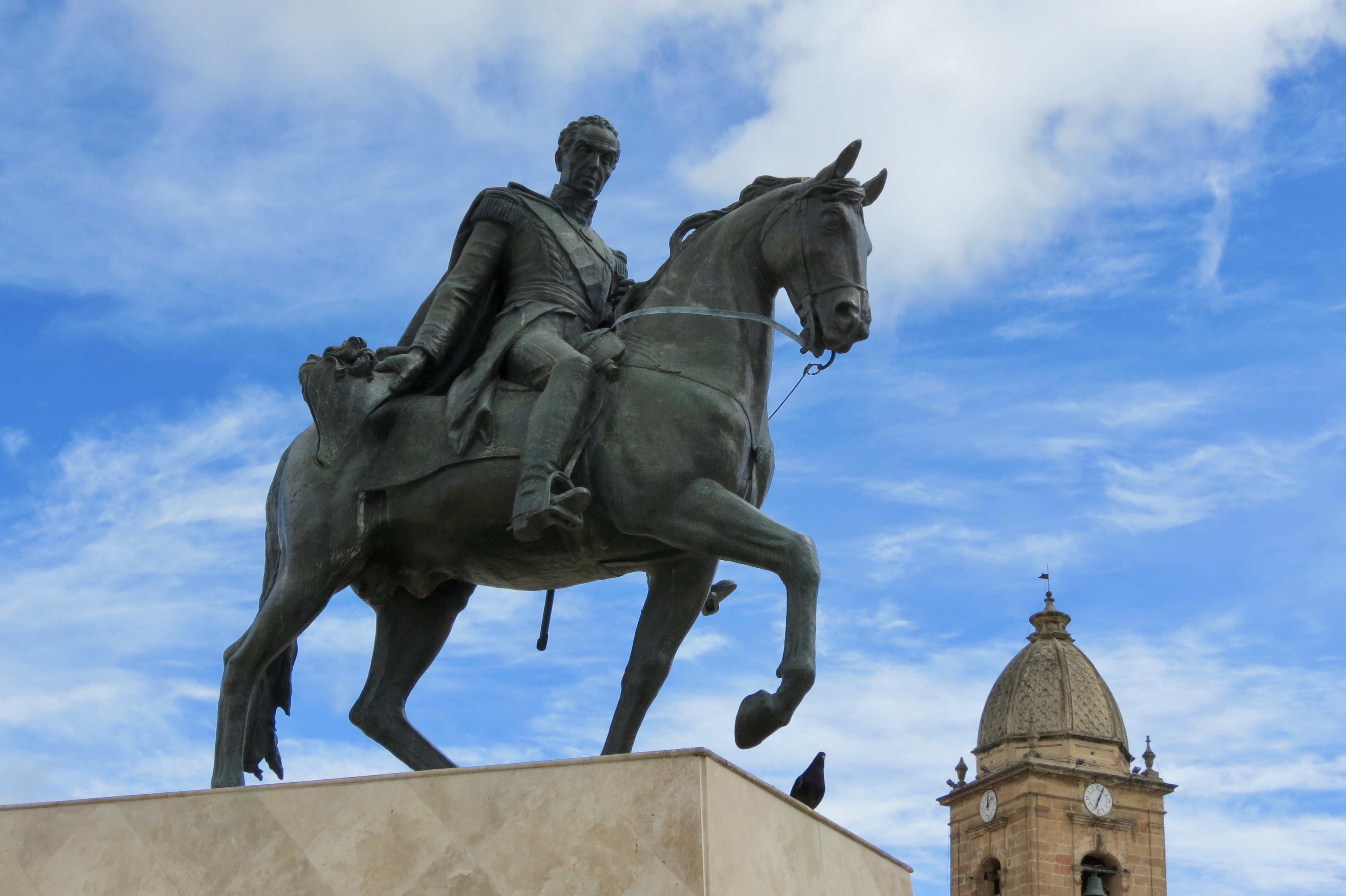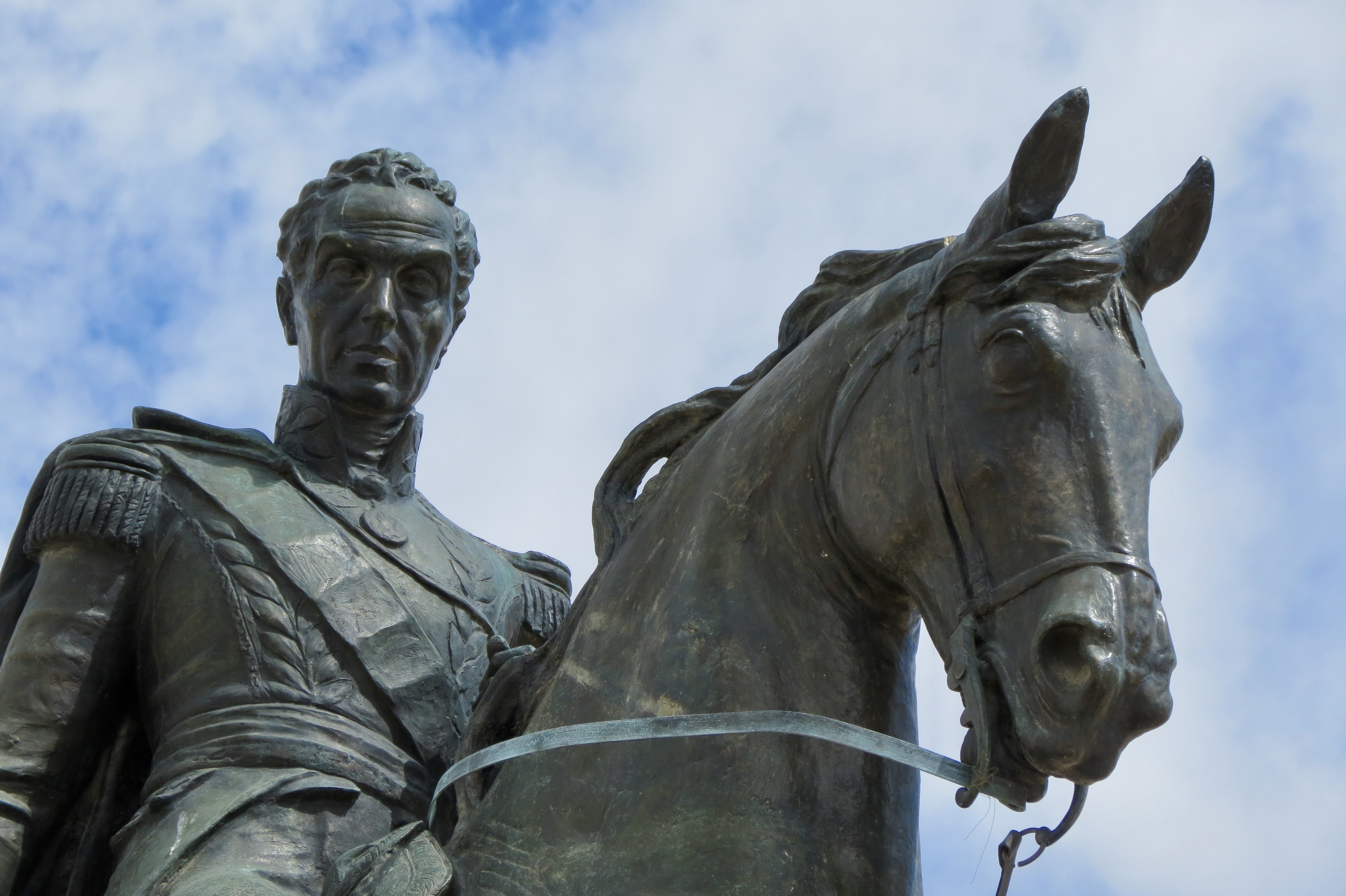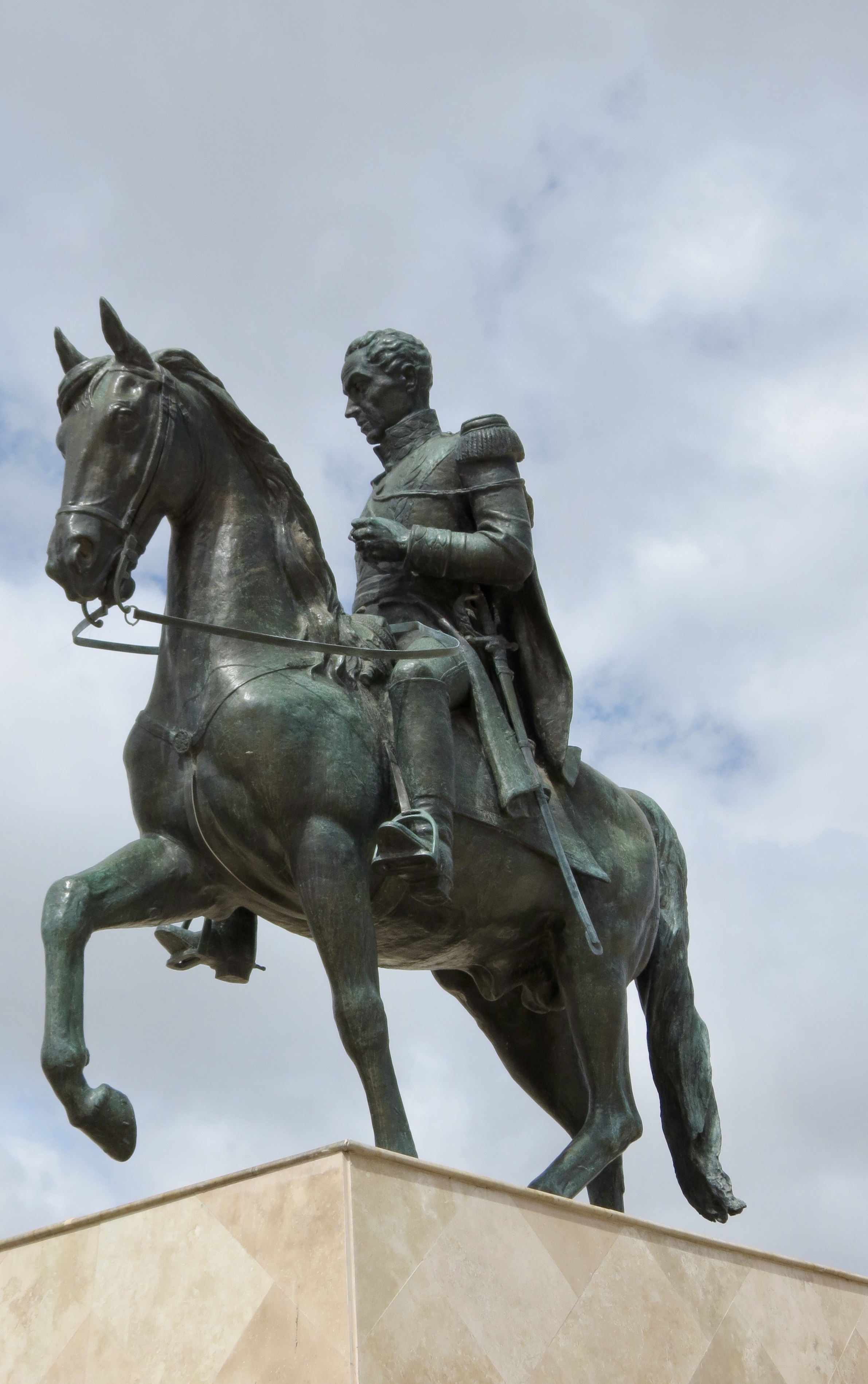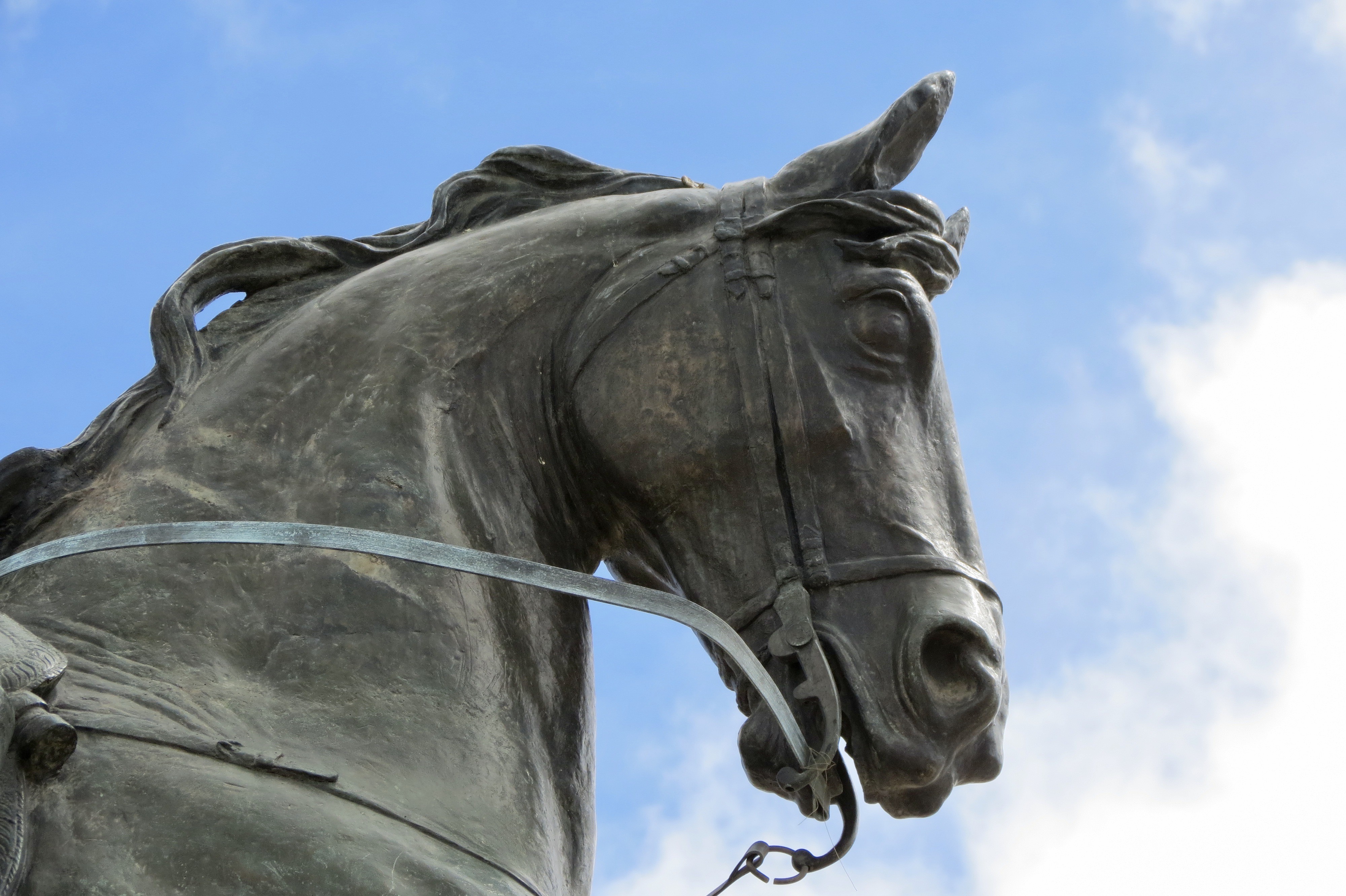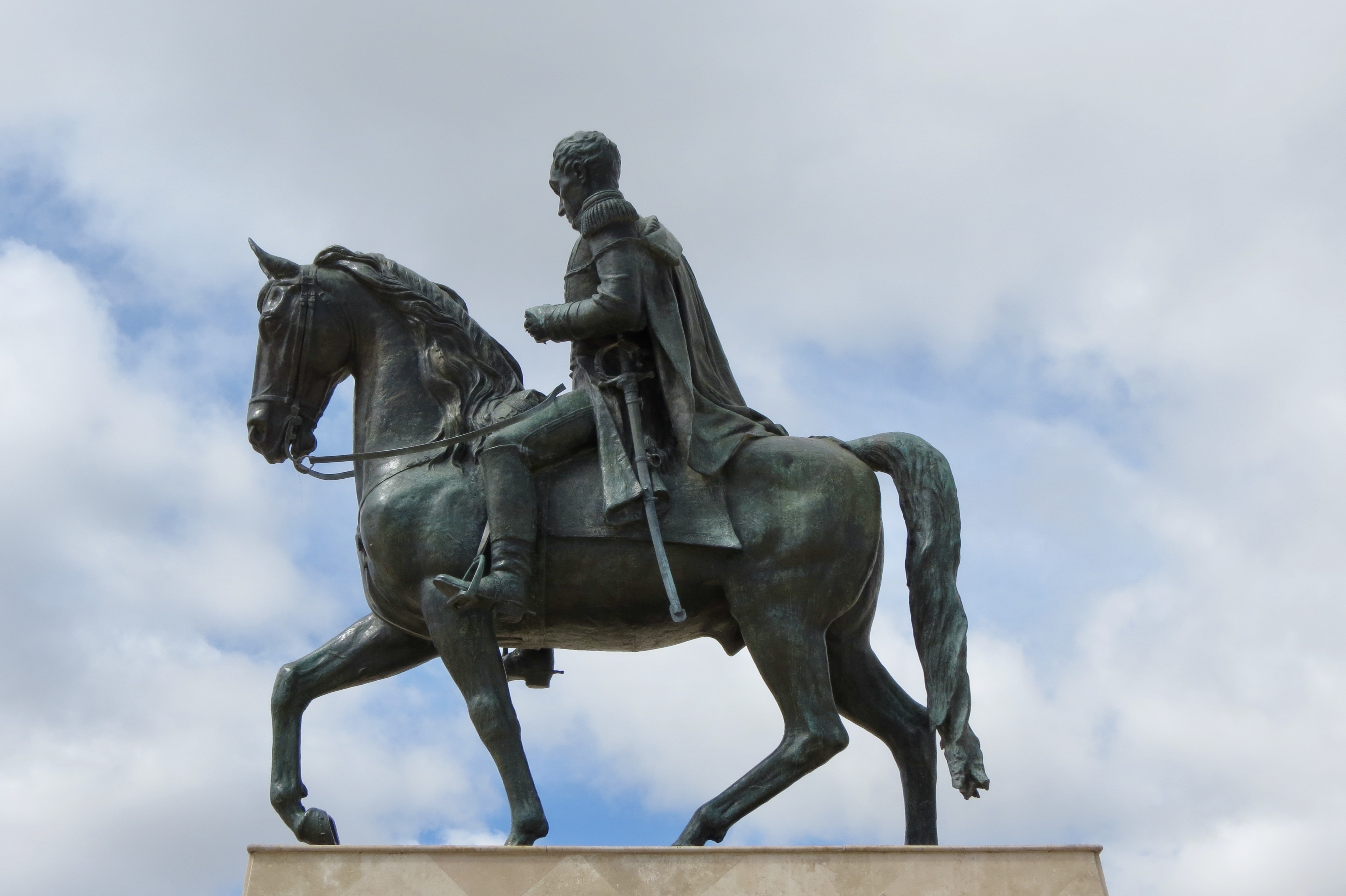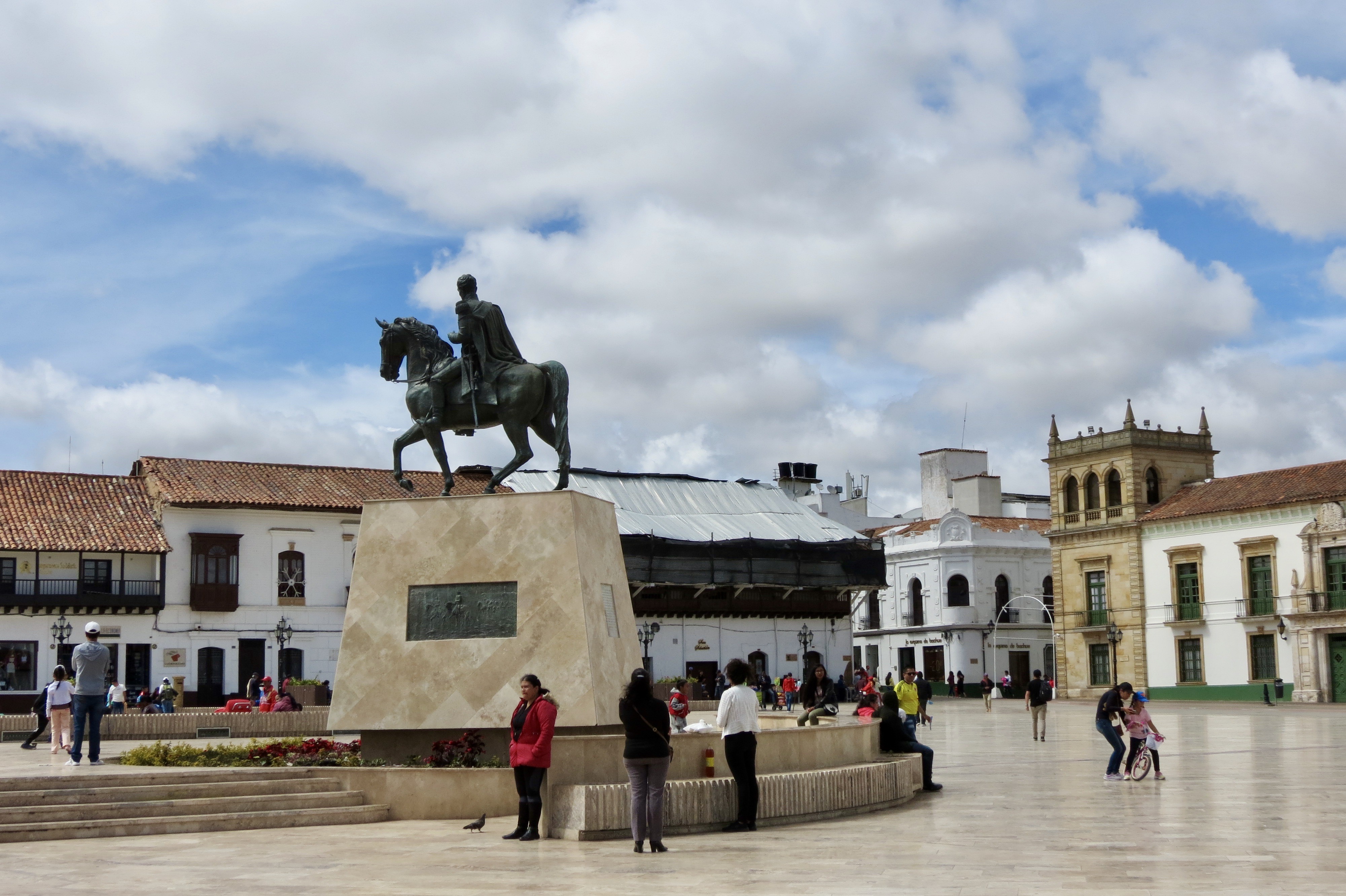- CountryColombia
- Town:Tunja
-
Year of creation:1883
- Rider(s):Bolivar, Simon
(1783 –1830) played a key role in liberating Venezuela, Colombia, Ecuador, Peru (together with José de San Martín), and Boliviafrom Spanish rule.
Born in Venezuela, Bolivar got a great deal of his education in France and Spain. He returned to Venezuela and got a military command in New Granada (nowadays Colombia) in 1813. In 1819 he successfully finalized a campaign for the independence of New Granada and launched from this stronghold independence campaigns in Venezuela and Ecuador, which he concluded with victories in 1821 and 1822. He became President of the new state Gran Colombia, which covered much of nowadays Colombia, Panama, Venezuela, Ecuador, northern Peru and the northwest of Brazil. In 1822 he took over the task of José de San Martin of fully liberating Peru.
Assisted by Antonio José de Sucre, Bolívar defeated the Spanish forces in 1824, resulting in the creation of the Republic of Bolivia, a country named after its liberator. Bolívar had great difficulties maintaining control of the vast Gran Colombia. After failing to write a new constitution, he proclaimed himself dictator in 1828, meant as a temporary measure to reestablish his authority and to save the republic. He survived an assassination attempt in 1828. Two years of uprisings followed. Bolivar resigned his presidency in 1830 and died in the same year, before he could go into exile in France as he intended.
Bolivar was an admirer of George Washington. They shared the same objective: independence for their people and the establishment of a democratic state. They differed, however, on two important matters. Bolivar was anti-slavery, despite coming from an area that relied heavily on slave labor, and he did not believe that the US system could function in Latin America, claiming that the governance of heterogeneous societies like Gran Colombia “will require an infinitely firm hand”.
(source Wikipedia)
- Sculptor(s):Maccagnani, Eugenio/Anderlini, Giovanni
Eugenio Maccagnani (1852 – 1930) was an Italian sculptor as well as Giovanni Anderlini (1821-?)
-
The Bolivar statue on the Plaza de Bolivar in Tunja dates all the way back to 1883. It was originally going to be placed in Bogota to mark their 100th anniversary of independence. In the capital there was already a statue of Bolivar, so the administration of President Nuñez donated to Boyacá and was inaugurated on August 7, 1891 to commemorate the Battle of Boyacá. By reforming the Plaza Bolivar in the twentieth century, the pedestal of the statue was changed.

